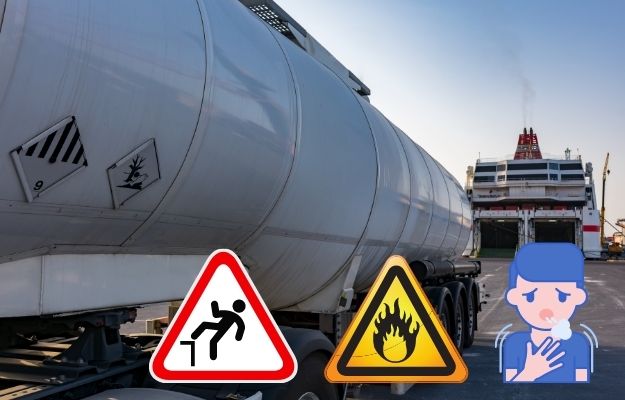Dependability is the key to better safety in the loading and unloading of tank trucks. But without establishing safety protocols, your company’s dependability hangs by a thread. These hazardous operations are very unsafe for the staff and drivers if adequate risk management schemes and protective equipment are not used. Jobs around the tank trucks and their contents have been known to cause extreme injury or even death when people are forced to perform strenuous activities irrespective of any prior preparation or training, they’ve undergone.
These trucks are often used to transport either dry bulk, liquefied, or gaseous commodities on highways instead of the seagoing barge/ship tankers. Because of the broad spectrum of liquids that can be transported, the type of tanker trucks are essential and are typically large; they may be isolated or not insulated. The tank trucks are pressure-pressurized or unpressurized (often employing internal divisions inside the tank called baffles).
Take a look at what equipment and training you need to protect your drivers and workers from these hazards that they may encounter.
Hazard #1 – Fatal Falls from a Top Loading Truck
Most tank trucks must be loaded and unloaded by a worker climbing up to the container’s top to open a hatch. Aside from the harmful fumes, wet surfaces can often cause slips. Preemptive solutions may have avoided these accidents and subsequent injuries. Like if the terminal had constructed and mounted a specially designed protective cage or a guard to make the container’s top surface more secure and easier to reach. And if the worker had fallen, the safety cage would have prevented the worker from hitting the ground.

Hazard #2 – Suffocation While Tank Cleaning
Because there might be leftover fumes or harmful liquids inside the tank, the risk of suffocation or inhalation of hazardous chemicals is always a clear and present danger to the cleaning workers. For safety’s sake, recommendations of having an emergency alert system that allows workers early notice of hazardous conditions and installing protocols that assist in recovering workers in confined spaces to save them in case emergencies happen. For oil tanker trucks, transporting petroleum-based products should appropriate terminal equipment to avoid these accidents.
Hazard #3 – Explosions and Fire Hazards
When working around volatile chemicals in bulk, fire and explosions are imminent hazards to watch out for. Proactive safety measures and sticking to strict protocols will benefit workers away from harm’s way.
To lessen the chances of significant accidents occurring at your industrial facility from tanker trucks that carry flammable liquids and gases, employees should be aware of the dangers. A strong commitment of a business to safety programs that protect workers and proactive approaches to hazardous incidents should be a top priority. Focusing on every possibility and locating all hazards to provide equipment customize to your needs should also be well-established. After all, thoroughly trained workers will recognize serious safety hazards and prevent any incidents, primarily also if they are also provided with all the right protective safety gear and equipment.
Leave a Reply